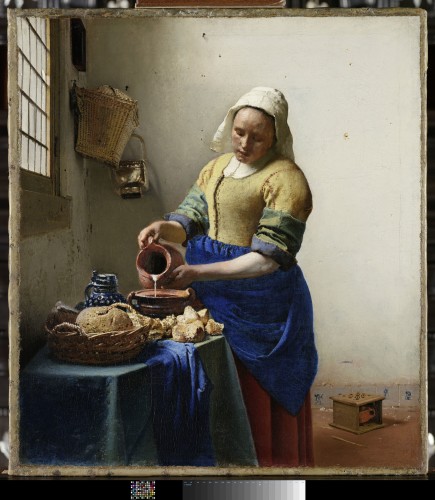Thanks to special loans from the most prominent American, British, German, and—naturally—Dutch museums, visitors will be able to see Vermeer in a new light.
The exhibition does away with the legend of the reclusive artist living in his own inaccessible, silent world—without ever implying that Vermeer was just one painter of many. Indeed, his artistic temperament grew more distinct through encounters with other artists. Vermeer did more than launch a new movement: he acted as an agent of metamorphosis.
“The Sphinx of Delft”: coined by French journalist and art critic Théophile Thoré-Bürger when he revealed Vermeer to the world late in the 19th century, this famous expression has served mainly to promote an enigmatic image of the painter. The myth of the solitary genius has done the rest. Yet Johannes Vermeer (1632–1675) did not attain his level of creative mastery in isolation from the art of his time.
Through comparisons with the works of other artists of the Golden Age—among them Gerrit Dou, Gerard ter Borch, Jan Steen, Pieter de Hooch, Gabriel Metsu, Caspar Netscher, and Frans van Mieris—the exhibition brings to light Vermeer’s membership of a network of painters specializing in the depiction of everyday life while admiring, inspiring, and vying with each other.
The third quarter of the 17th century saw the Dutch Republic’s global economic power reach its apogee. Proud of their social standing, the Dutch elite demanded art that would reflect their prestige. This demand led to the emergence of a “new wave” of genre painting in the early 1650s, with artists shifting their focus to idealized depictions of domesticity in elegant society. The men and women portrayed in these masterfully-executed pieces display a staged civility.
Although the artists in question worked in different cities across the Republic of the United Netherlands, their technique, and the style, subjects, and compositions featured in their work showed considerable similarities. The exceptional quality of their creations can be partly attributed to the lively professional rivalry that existed between them.
Exhibition curators: Blaise Ducos, Department of Paintings, Musée du Louvre, Paris, Adriaan E. Waiboer, National Gallery of Ireland, Dublin, and Arthur K. Wheelock Jr., National Gallery of Art, Washington.








